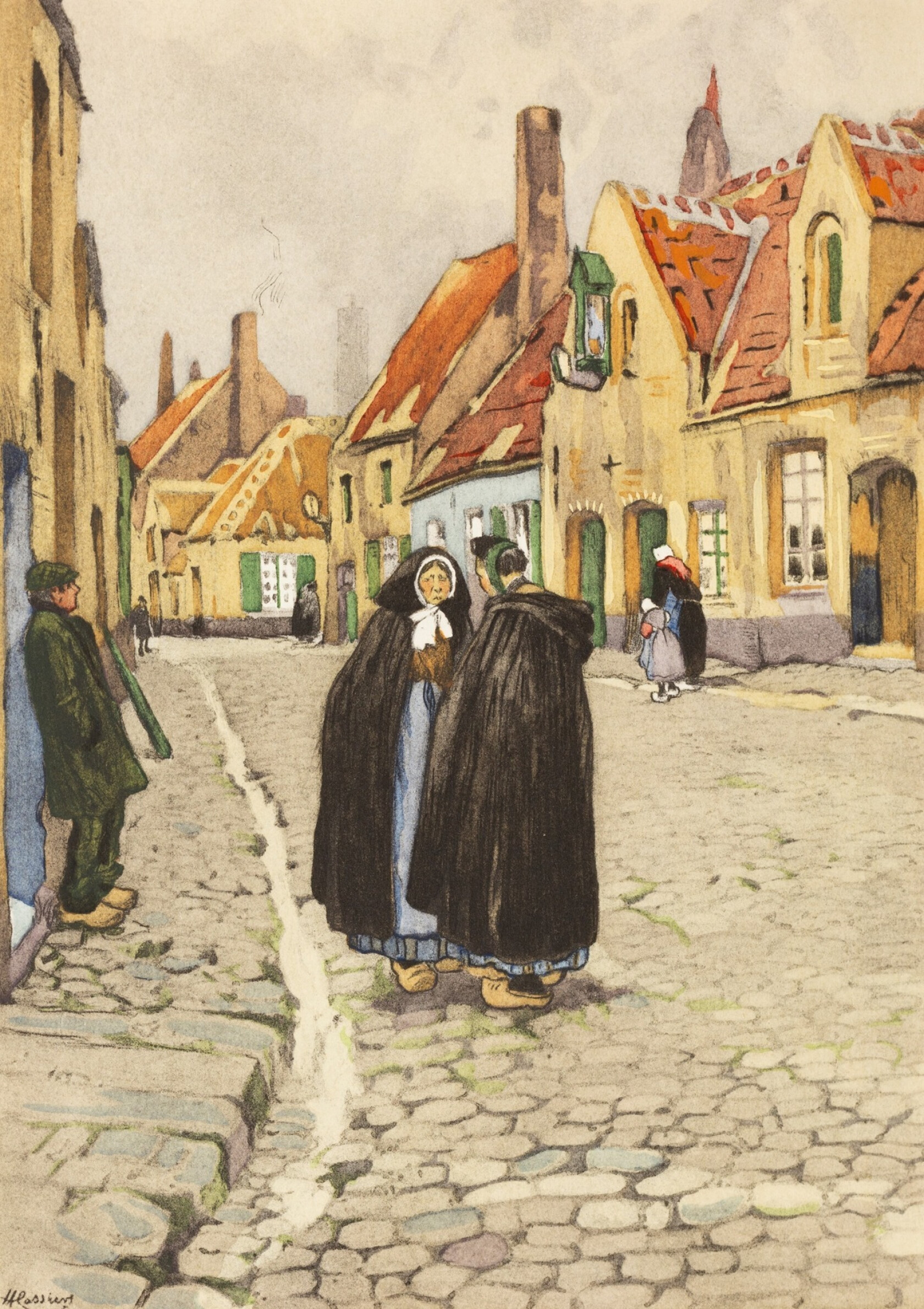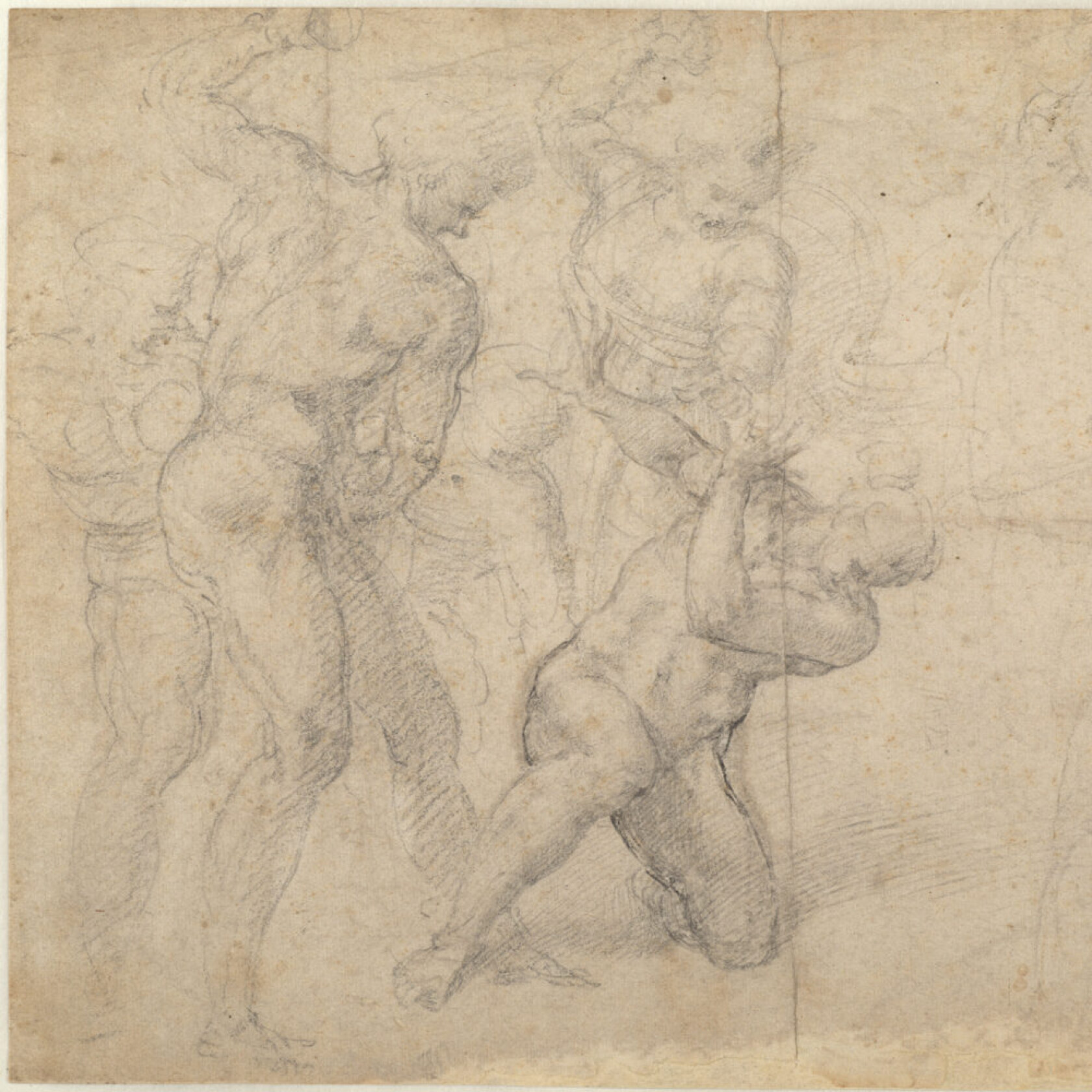Behind the scenes at the Print Room

From the entrance of the Groeningemuseum you have a view of the construction site of the new BRUSK building, where – in addition to two large exhibition spaces – we are also creating facilities to preserve our most vulnerable collections. These include, among others, the prints and drawings from the Print Room. Our Print Room team is working tirelessly to register and digitize the entire collection of more than 23,000 prints and drawings before the move to the new state-of-the-art depot in BRUSK. Curious to find out exactly how we are tackling this monumental task?
To prepare for the move of the collections, we launched a volunteer programme this year. In an earlier post, you already met the volunteers helping to register and pack the hat and textile collections. In the Print Room, we’re working with volunteers to register works on paper, after which each piece is carefully stored in a mount or in an acid-free paper folder. Read more about our volunteers.
In addition to our volunteer programme, we were also able to launch three projects with support from the Flemish Community. Thanks to the funding, we were able to hire project registrars to carry out in-depth registration of various sub-collections within the Print Room. This means that the project registrars conduct preliminary research to describe the works on paper in greater detail. And they, in turn, are assisted by enthusiastic volunteers through our open registration projects.

Three registration projects in the spotlight
Enrich the View of Bruges
In 2021, our first open registration project 'Enrich the View of Bruges’ started with a focus on prints and drawings with a view of Bruges or works on paper made or collected by a citizen of Bruges. For this project, we selected not only items from our Print Room, but also prints, drawings and photographs from the Public Library and the City Archives. Using a crowdsourcing tool on the DoeDat platform, heritage enthusiasts were able to identify the Bruges sites depicted in the images.

Hub! From depot to digital collection
Following on from this, a second funded project was launched: ‘Hub! From depot to digital collection’. This project focuses on the registration, digitalization and public accessibility of two major sub-collections from the Print Room. These are the print collection of the Bruges-based print collector and dealer Guy Van Hoorebeke, which we acquired in 2014, and the drawing collection of the Jean van Caloen Foundation, which came under our care in the spring of this year. In addition, a research initiative is underway to determine the best method for making bound works on paper accessible online, using drawing and print albums from these collections as case studies.

Apprentice-Master
This year, we launched our third funded project, titled ‘Apprentice-master’, which delves into the collection of Bruges academy drawings from the 18th and 19th centuries. Our project registrars search for information about the drawings and their creators in archival documents from the City Archive. To discover which prints were used as teaching materials in the drawing classes that focused on copying prints, we are drawing on research conducted at the Municipal Academy of Bruges, the Royal Library of Belgium in Brussels and the Royal Academy of Fine Arts in Ghent.
One of the most valuable sources in our collection is a set of 18th-century notebooks belonging to Jan Garemijn, director of the Bruges Academy. To help decipher them, we once again called on volunteers via the DoeDat platform, under the title 'Garemijn ontcijferd'. Garemijn’s notes are packed with fascinating details about nude model poses, payments, evaluations of prize drawings and other administrative matters of the Academy. With incredible speed, the volunteers managed to transcribe the nearly six hundred pages in just two weeks: a fantastic achievement. The Print Room is now carefully processing this input so that the transcriptions can be integrated into the ‘Leerling-meester’ project. Our goal is to connect all the gathered information to gain deeper insight into teaching practices at the Bruges Academy. Stay tuned.





